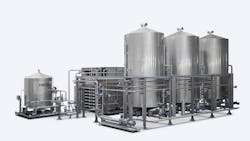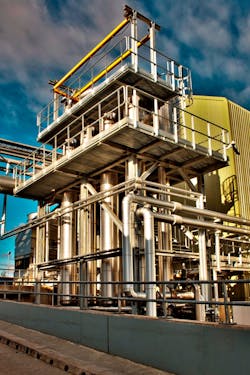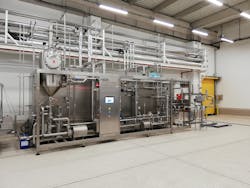Many industrial processes require energy, but only a portion of that energy input is used for each operation such as pasteurization or evaporation. Unused energy is wasted, often passing to the environment as hot gas or liquid. However, by using heat exchangers, it is possible to recapture most of this untapped energy through waste heat regeneration.
Heat regeneration (or heat recovery) is the process whereby heat from a process which would otherwise be lost or wasted is recaptured and used for useful heating purposes. Heat regeneration should not be confused with "regenerative heat exchangers," which are a specific type of heat exchanger in which the product and service fluids flow alternately, and the heat is stored in the structure of the heat exchanger.
At HRS when we talk about heat regeneration, we mean the recovery of as much surplus heat (or cooling capacity) as possible after the primary function of the heat exchanger has been performed. This can then be reused to either improve the efficiency of the heat exchange process or used elsewhere.
Benefits of heat regeneration
Heat recovery improves the energy efficiency of heat exchange processes, so the greatest benefit of heat regeneration (recovery) is that less energy is required for a particular heating or cooling operation. This obviously provides financial benefits but is also better for the environment compared to systems without heat recovery.
Repurposing recovered heat can also reduce the amount of heat required for certain processes. For example, if a material is pre-heated with recovered heat, then it may be possible to complete the necessary heating (for example for pasteurization) using hot water from another source or part of the factory, instead of requiring a dedicated boiler to provide the necessary temperature rise.
By increasing the energy efficiency of the heat transfer process, heat recovery can also make it possible to reduce the size of the heat exchange equipment required or reduce the necessary processing time.
Heat recovery in action
One example can be found in food pasteurization processes, where products such as cream need to be heated to the necessary temperature to achieve pasteurization, then rapidly cooled to maintain shelf life and quality. Such systems involve the use of two heat exchangers: one uses hot water to raise the temperature, while the second uses chilled water to cool the cream down again. The cooling process produces warm water which can be discarded, cooled for re-use or cooled with some of the heat contained being used to pre-heat the cream before the pasteurization process. This last option utilizes heat recovery or heat regeneration, reducing the amount of new energy required for the subsequent first heating phases.
As another example, many biogas plants use heat exchangers to pasteurize the digestate produced during the anaerobic digestion (AD) process. The "surplus" heat which is generated after the system has been running can also be used to pre-heat the digestate, reducing total heat load and improving overall efficiency.
Heat recovery can also be used in gaseous applications. Whether it is using the heat from the flue gas of a biogas combined heat and power (CHP) engine to pre-heat digestate, or a large gas-to-gas heat exchanger to capture waste heat from chemical processing, there is no reason to waste the heat present in gaseous products or waste streams.
Perhaps the most common use of heat regeneration is demonstrated in multi-effect evaporation systems, where a number of heat exchangers are combined, for example in the HRS DCS Digestate Concentration System. The first evaporation stage heats liquid digestate and uses a cyclone separator; the steam produced from this first cycle (usually available at 158 degrees Fahrenheit) is then used as the heating media for the second effect, whereby the process is repeated. The subsequent steam (usually available at 140 degrees Fahrenheit) is then used as the heating media for the third cycle. The number of effects is determined by the level of dry solids required and the amount of surplus heat available, up to a maximum of four cycles. After the final stage, the steam is condensed back to water and this heat is used to pre-heat the incoming product before the first stage of evaporation. In all, the heat is regenerated up to four times in the process.
Other considerations
To determine the potential value of waste heat, and therefore determine what it can be used for, it is necessary to know a number a parameters about the process temperature, the product and heating (or cooling) medium being used, and the performance of the heat exchange process in terms of heat transfer area and flow rate, for example. It is therefore important to consider energy regeneration or recovery as early as possible. Heat recovery systems can be retrofitted to many processes, but their design is often a compromise and retrofitted solutions may involve excessive pipework and other connections.
To maximize the benefits of heat regeneration it is important that waste heat is transferred to the storage media (e.g., water or thermal transfer fluid such as glycol) as soon as possible after its source. This is particularly true where the waste heat is in the form of a gas, as this has a much greater energy constant than liquid, meaning that the heat is lost much faster.
By considering all these factors, it will be possible to calculate both the additional capital costs associated with specifying heat regeneration in a project, together with the savings in running costs and energy, and from this determine the return on investment for the project. Although capital costs may be higher, the longer term financial and environmental benefits will make the use of heat regen in heat exchanger projects highly attractive.
Matt Hale is the international sales and marketing director for HRS Heat Exchangers.


